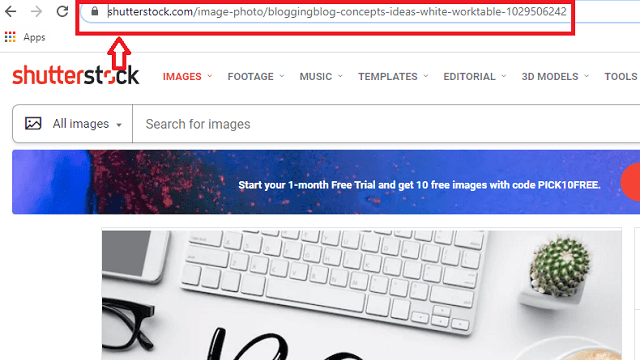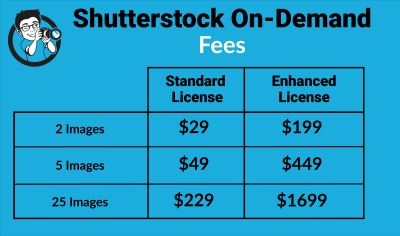If you’ve ever browsed through stock image websites, you’ve probably come across Shutterstock—a massive library of high-quality images perfect for blogs, presentations, or creative projects. But here’s the catch: most images are protected by watermarks, those semi-transparent overlays that indicate the image’s owner and prevent unauthorized use. Watermarks are like digital fingerprints—they’re meant to keep your hands off unless you buy or license the image. While it might be tempting to find ways around these watermarks, understanding what they are and how they work is the first step to navigating the world of Shutterstock images responsibly and creatively.
Understanding the Legal Aspects of Downloading Shutterstock Images

When it comes to downloading images from Shutterstock, legality is a big deal. These images are copyrighted, meaning the creators and photographers own the rights to their work. Using images without proper licensing or permission can lead to serious legal consequences, including fines and lawsuits. It’s important to recognize that trying to download images for free without paying or without proper licensing is considered copyright infringement. Shutterstock offers various licensing options, but attempting to bypass the system—like using unofficial tools or websites—can violate copyright laws and
Official Methods to Access Shutterstock Images for Free

If you’re looking to get Shutterstock images without spending a dime, the most straightforward way is to explore their official options. Shutterstock understands that sometimes you just need a quick, high-quality image, and they offer a few legitimate avenues to access images for free.
Shutterstock Free Trial is the most popular and reliable method. When you sign up for their free trial, you typically get a certain number of downloads or credits to use within a limited period—often 7 days. During this trial, you can access thousands of images, illustrations, and vectors without paying. Just remember, after the trial ends, you’ll need to purchase a subscription or pay per download to keep using their images legally.
Another official way is to look for images labeled as “Free Download” on their platform. Shutterstock occasionally offers select images for free as part of promotional campaigns or seasonal collections. These images are clearly marked, and you can download them directly without a subscription. Keep an eye on their Free Images page or promotional banners—these are great resources for free, high-quality images.
Additionally, Shutterstock sometimes partners with educational institutions, non-profits, or creative communities to provide free access or special downloads. If you belong to such an organization, check if there are any exclusive offers available to you through your membership or partnership programs.
While these official methods are straightforward, always make sure to read the licensing terms. Shutterstock’s free images are usually for personal or commercial use, but some may have specific restrictions. Using images outside of their permitted scope could lead to copyright issues, so it’s best to stay informed and use images responsibly.
Using Free Trial Offers to Download Shutterstock Images
If you’re eager to access Shutterstock images without paying right away, taking advantage of their free trial is your best bet. It’s a simple, risk-free way to get high-quality images for your projects, whether for personal use, a presentation, or content creation.
Here’s how to make the most of the free trial:
- Sign Up: Head over to Shutterstock’s website and look for the free trial offer. Usually, it involves creating an account with your email and payment details. Don’t worry—your card won’t be charged until the trial period ends, and you can cancel at any time.
- Choose a Subscription Plan: Shutterstock offers various plans, but for the trial, you’ll typically get a set number of downloads—like 10 or 20 images. Pick the one that suits your needs.
- Download Your Images: Browse their extensive library, find the images you love, and download them. Make sure to do this within the trial period to avoid charges.
- Cancel Before the Trial Ends: If you decide not to continue, cancel your subscription before the trial period expires. This way, you won’t be billed, but you’ll still keep the images you’ve downloaded during the trial.
Remember, the images you download during the trial are covered by Shutterstock’s licensing terms, so you can use them confidently in your projects. Just be mindful of the download limits and expiration dates.
Using the free trial is a great way to access a wide range of professional images without any upfront cost. It’s perfect for temporary projects, testing out their library, or seeing if Shutterstock’s style fits your needs. Just always be sure to respect the licensing agreements and cancel on time if you don’t wish to continue with a paid plan.
Exploring Alternative Websites Offering Free Stock Images
If you’re on the hunt for high-quality images without the watermark hassle, you’re in luck! While Shutterstock is a fantastic resource, it isn’t the only place to find stunning stock photos. There are several other websites that offer free images, often with licensing that allows you to use them for personal or even commercial projects. Let’s take a quick tour of some popular options:
- Pexels: Known for its vast collection of free stock photos and videos, Pexels offers images that are free to use without attribution in most cases. The site is user-friendly, making it easy to find exactly what you need.
- Unsplash: A favorite among creatives, Unsplash boasts a huge library of high-resolution images contributed by photographers worldwide. All images are free to download and use, even commercially.
- Pixabay: Not only does Pixabay provide free photos, but it also offers illustrations, vectors, and videos. Their licensing allows for wide usage rights, making it a versatile resource.
- Freepik: While Freepik offers free resources, including vectors and PSD files, some images require attribution. Be sure to check the license details for each download.
- StockSnap.io: This site features a large collection of free stock images with new photos added weekly. All images are free to use, and no attribution is necessary.
Using these sites is straightforward: search for your desired topics, browse through the results, and download images directly—no watermarks, no fuss. Remember, each site has its own licensing terms, so always double-check if you plan to use images for commercial purposes or modifications.
Exploring these alternatives can save you a lot of time and frustration. Plus, many of these platforms have active communities of photographers and designers, so you’re often getting fresh, unique images that stand out from the crowd.
Tips for Avoiding Watermarked Images and Ensuring Quality
Let’s face it—watermarks can be super annoying, especially when you’re trying to create a polished project. The good news is, with a little know-how, you can avoid watermarked images altogether and ensure you’re working with high-quality visuals. Here are some handy tips:
- Use Legitimate Free Resources: Stick to reputable sites like Pexels, Unsplash, and Pixabay. These platforms provide images that are free to download without watermarks and are of high resolution.
- Check Licensing Details: Even on free sites, some images may require attribution or have restrictions. Always read the license info before downloading or using an image.
- Avoid Google Image Searches for Free Use: While Google Images is a powerful tool, many images there are copyrighted. If you find images with watermarks or restrictions, don’t use them—look for images on trusted stock photo websites instead.
- Download Originals in High Resolution: To ensure quality, always select the highest resolution available. Avoid compressed or thumbnail versions, which can look pixelated or blurry.
- Look for Creative Commons Licenses: Some images are released under Creative Commons licenses that allow free use. Just make sure to follow the license terms, including attribution if necessary.
- Use Editing Tools for Fine-Tuning: After downloading, you can enhance images with editing software (like Canva, Photoshop, or GIMP) to improve brightness, contrast, or crop out unwanted parts. This helps make your images look professional.
- Beware of Watermark Removal Attempts: Never attempt to remove watermarks from copyrighted images. This is illegal and unethical. Instead, always opt for images that are legally free or purchased from legitimate sources.
By following these tips, you’ll be able to avoid watermarked images and ensure the visuals you incorporate into your projects are crisp, clear, and professional-looking. Remember, quality visuals can make a huge difference in how your content is perceived, so investing a little time in sourcing the right images is well worth it!
Risks and Ethical Considerations of Downloading Watermarked Images
Let’s be real — the idea of downloading Shutterstock images for free without watermarks can seem tempting, especially when you’re on a tight budget or just starting out. But it’s important to understand the risks and ethical issues involved. Not only could you be putting yourself in legal hot water, but you might also be contributing to unfair practices that hurt creators and the industry as a whole.
Legal Risks: Downloading or using watermarked images without permission can lead to copyright infringement. Shutterstock’s images are protected by copyright law, and unauthorized use can result in hefty fines, lawsuits, or other legal penalties. Even if you think you’re just trying to test out a design, it’s still considered unauthorized use if you haven’t purchased a license.
Ethical Considerations: Creators and photographers spend hours, days, or even years building their portfolios and earning a living through their work. Downloading images without paying for them diminishes their effort and the value of their work. Think about it — would you want your work stolen or used without compensation? Respecting the rights of creators promotes a fair and sustainable creative community.
Another concern is quality and trustworthiness. Sometimes, free download methods involve shady websites or illegal hacks that can compromise your device with malware or viruses. These sites might also trick you into providing personal information or installing unwanted software.
What about the potential reputation damage? Using unlicensed images can harm your brand’s credibility if your audience discovers that the images are stolen or not properly licensed. It’s always better to build your reputation on honesty and integrity.
In summary, while it might seem like a shortcut, downloading Shutterstock images without proper licensing can cause more harm than good. Protect yourself legally, respect the hard work of creators, and always opt for legitimate methods to access images. That way, you stay on the safe side and support a healthy creative ecosystem.
Conclusion and Best Practices for Using Shutterstock Images Legally and Safely
So, after exploring the ins and outs of downloading Shutterstock images, it’s clear that the best way forward is to stick with legal and ethical methods. Not only does this keep you out of trouble, but it also supports the talented creators behind those stunning visuals.
Here are some best practices to keep in mind:
- Subscribe or Purchase Licenses: The most straightforward way to access Shutterstock images legally is by subscribing to their plans or buying individual licenses. This ensures you have the right to use the images commercially or personally, depending on your needs.
- Use Free Resources Wisely: Shutterstock offers some free images periodically. Keep an eye out for these or consider their free trial options, which often provide access to a selection of images without watermarks.
- Always Read Licensing Terms: Be sure to understand the licensing agreement for each image you use. Some images are only licensed for specific uses, and using them beyond those parameters can lead to legal issues.
- Use Watermarked Images for Drafts: If you want to test how an image fits into your project, watermarked previews are a safe choice. Just remember not to use them in final designs or for commercial purposes.
- Credit Creators When Appropriate: Even if not legally required, giving credit to the photographer or creator is a nice way to show appreciation and support their work.
- Stay Informed and Updated: Keep yourself educated on copyright laws and Shutterstock’s policies. Platforms often update their licensing terms, so staying informed helps you avoid accidental misuse.
In the end, choosing legitimate ways to access Shutterstock images ensures you respect the hard work of creators, avoid legal pitfalls, and produce high-quality, trustworthy work. Remember, creativity flourishes best when everyone plays by the rules!


